#기인주
Photo


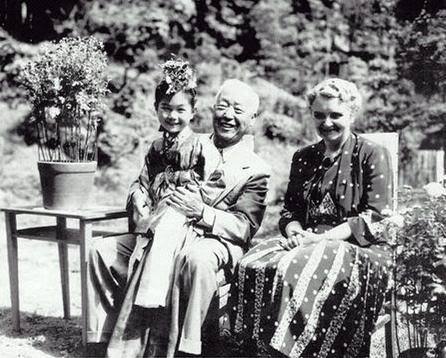


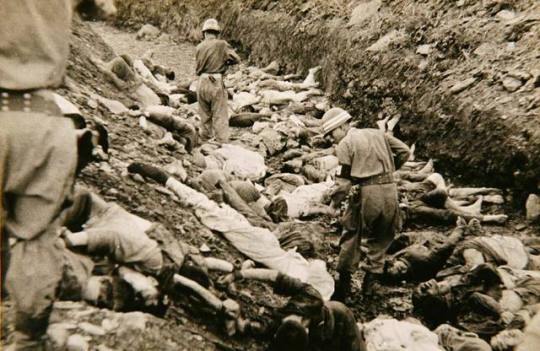

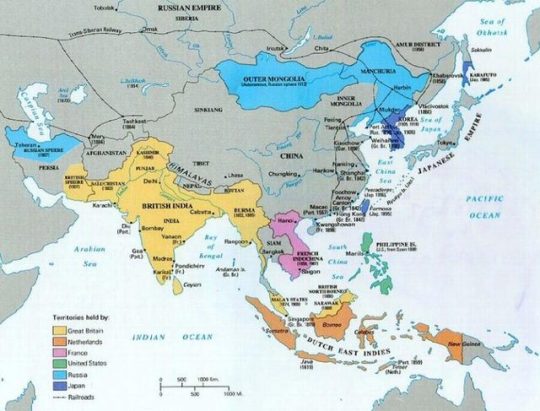

“The story of South Korea’s past starts with a provisional government often forgotten about in history textbooks. The People’s Republic of Korea lasted only from 1945 to 1946, and its capital was in Seoul...As soon as American troops landed on the September of 1945...What immediately occurred afterwards was the abolition of the People’s Republic of Korea by military decree. Officials serving under the government were shot, buildings were bombed, and supposedly “communist-sympathetic” Korean troops stationed in the country were summarily executed in a bloodbath lasting for several months. The United States Army Military Government was established, causing the eruption of mass public outrage at military personnel from the former Japanese Empire serving in office in South Korea.
With haste, the First Republic of Korea, what we now know as South Korea, was declared in 1948. Syngman Rhee was flown abroad a US military aircraft to Tokyo, travelling to Seoul, and was installed as President. Rhee immediately arrested the remaining left-wing opponents in the political arena...Syngman Rhee, as a fierce anti-communist and nationalist who would later be forced into exile by his own citizens.”

“Rhee encouraged his internal security force, headed by his trusted ally, Kim Chang-ryong, to arbitrarily detain people he suspected of having “leftist affiliations” and subject them to days of detainment in labour camps...Syngman Rhee was such a popular leader that he was re-elected four times. During elections, his political opponents often suddenly died or were arrested by South Korea’s internal security force under the suspicion of being “North Korea collaborators”.
(via The secret genocide in South Korea you’ve probably never heard of)

The Korean War: Barbarism Unleashed
“Syngman Rhee was a conservative nationalist who lived in the United States for over four decades after being imprisoned by the Japanese as a young man. The Truman administration brought him back to Korea in October 1945 to lead the new South Korean government. Considering him a “Jeffersonian democrat,” the U.S. Office of Strategic Services believed that Rhee harbored “more of an American point of view than other Korean leader.”
In practice, Rhee exhibited strong autocratic tendencies and relied heavily on Japanese collaborators – in part because he had been out of the country so long. He was elected president in July 1948 by members of the National Assembly, who themselves had been elected on May 10 in a national election marred by boycotts, violence and a climate of terrorism.
“The primary cause of the South Korean insurgency was the ancient curse of average Koreans – the social inequity of land relations and the huge gap between a tiny elite of the rich and the vast majority of the poor.” At the same time Rhee followed American dictates in passing a secret clause agreeing to export rice to Japan and signed contracts allowing American businesses to exploit the So Lim gold mine and take over the Sandong tungsten mine, which was guarded by U.S. troops.”

The director of the U.S. Army’s Department of Transportation stated: “We had a battle mentality. We didn’t have to worry too much if innocent people got hurt. We set up concentration camps outside of town and held strikers there when the jails got too full…. It was war. We recognized it as war and fought it as such.”
By mid-1947, there were almost 22,000 people in jail, nearly twice as many as under the Japanese...Professors and assemblymen were among those tortured in custody. Those branded as communists were dehumanized to the extent that they were seen as unworthy of legal protection...Any red was not considered human...Because we weren’t human, we had no rights.” The scale of repression in South Korea at this time far surpassed that of North Korea. In Mokpo seaport, the bodies of prisoners who had been shot were left on people’s doorsteps as a warning in what became known as the “human flesh distribution case.” A government official defended the practice saying they were the most “vile of communists.”
On war’s eve, seasoned intelligence analyst Lt. Walter Choinski and the South Korean G-2 chief of staff were curiously transferred and a report by distinguished cross recipient Donald Nichols predicting a North Korean attack 72 hours before was suppressed by Willoughby. This contributed to the “intelligence failure” that rendered the North Korean attack of June 25th a “surprise;” a perception that made the war more politically palatable.”

“In mid-September Gen. MacArthur engineered an amphibious landing behind enemy lines at Inchon...“Operation Chromite,” as it was called, was enabled by the seizure of Wolmi-do Island, after it was showered with rockets, bombs and napalm, and by a joint CIA-military operation on Yonghung-do, a small island ten miles from Inchon, where Navy Lt. Eugene Clark obtained vital information for the assault.
The Korean War was replete with atrocities undertaken in violation of the Geneva Convention and international laws of war, which the U.S. ironically had been instrumental in establishing (four Geneva conventions of 1949). Because of the climate of the Cold War and continued North-South division, a proper accounting and reckoning never took place, and many Koreans never were able to obtain justice for unlawful killings of their loved ones.
Whereas in the United States, most of the war atrocities were little discussed or attributed to the communists, under the South Korean military dictatorship, all sympathetic discourse designed to raise awareness of massacres was subject to prosecution. The bereaved families suffered severe discrimination as authorities marginalized them from civil society and politics and placed them under surveillance by the Korean National Police (KNP) and the Korean Central Intelligence Agency...Some of the worst atrocities occurred in the summer of 1950 when South Korean KNP and ROKA units emptied the prisons and shot detainees, dumping the bodies into hastily dug trenches, abandoned mines, or the sea.”
“The most concentrated killing of the war occurred in Taejon, where the KNP slaughtered thousands of leftists under American oversight. According to the historian Bruce Cumings, in July 1950, as “the North Korean People’s Army bore down upon the city of Taejon, south of Seoul,” South Korean police “authorities removed political prisoners from local jails, men and boys along with some women, massacred them, threw them into open pits, and dumped the earth back on them. Somewhere between 4,000 and 7,000 died . . . American officers stood idly by while this slaughter went on, photographing it for their records, but doing nothing to stop it. In September 1950 the Joint Chiefs of Staff decided to keep these photos classified; they were not released until 1999, after a determined effort by a psychologist in New York, Do-Young Lee, whose father had been murdered by southern authorities in August 1950.”
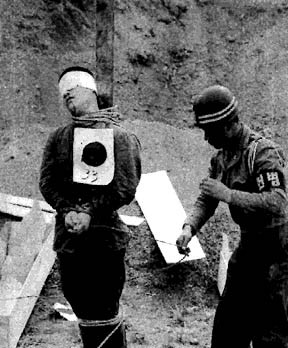
“Donald Nichols, a U.S. Air Force officer who worked in military intelligence, was the embodiment of the dark side of American participation in the Korean War. He issued bounties for the severed body parts and heads of captured communist agents, threw POWs off of helicopters, and recruited defectors for suicidal missions into the North. He also witnessed the systematic torture and massacre of Korean civilians.
In many ways, Nichols was a real-life version of Lieutenant Kurtz, a character in Francis Ford Coppola’s Vietnam War film, Apocalypse Now, who had formed his own private army which engaged in wide-scale torture and eschewed all civilized norms... “Nichols was an uncontrollable commander in a faraway shadow land. He was a highly decorated U.S. Air Force Intelligence officer who ran his own secret war for more than a decade [in which he] lost touch with propriety, with morality, with legality – even with sanity if military psychiatrists are to be believed.
[I]n Nichols, Rhee discovered a back door for delivering intelligence that could influence American policy towards Korea. He referred to the young American as ‘my son Nichols.’” According to Air Force historian Michael Haas, the personal ties that Nichols maintained for more than a decade with a foreign head of state had no parallel in the history of U.S. military operations. Incredibly, one had to ask “what the hell is a twenty three year old air force sergeant doing in the role of private confidante to a head of state.”
The capture and execution of senior communist leaders was often confirmed by cutting off their heads and sending them in gasoline cans to army headquarters in Seoul. A photo of Nichols shows him and several other army officers inspecting the heads; in another, the head of a guerrilla leader was being pulled out of its box by the hair.”

“After the North Korean invasion of the South, Nichols witnessed the massacre of hundreds of South Koreans by the ROKA at Taejon. In his memoirs, he misstated where the massacre took place in order to uphold the official army narrative that blamed the killings on the communists; an allegation reported uncritically in Roy Appleman’s official army history of the Korean War.
Nichols’ nephew stated that after he returned home from Korea, he had a huge amount of cash which he kept in his freezer. The money may have derived from currency manipulation schemes that were widely prevalent among army officers in Korea and the illicit selling of military equipment, though Nichols handled a lot of cash in running secret agents. In 1957, he was relieved of his command for undisclosed abuse of authority, and put in a straitjacket and admitted for psychiatric treatment. His nephew states that Donald told him “the government wanted to erase his brain – because he knew too much.”
(via The Korean War: Barbarism Unleashed | US Foreign Policy blog)

Failure to Communicate: U.S. Intelligence Structure and the Korean War
“The Korean War had three distinct phases. The first phase began with the North Korean invasion across the 38th parallel in June 1950...In September 1950, the amphibious landing at Inchon cut off North Korean lines and initiated the second phase of the war. U.S., ROK, and U.N. forces drove a demoralized and unsupplied North Korean army nearly back to the Chinese border. MacArthur’s decision to invade North Korea led to the third phase of the war—the Chinese decision to commit forces into the conflict.
Military leaders in the Pacific also mistrusted each other and the young civilian intelligence agencies. Willoughby and MacArthur refused to cooperate with the CIA and denied them access to Army reporting and facilities. The Air Force and Army refused to combine human intelligence efforts in Korea, specifically with regards to interrogations. The Air Force created their own interrogation team that competed with the Army’s Korean Liaison Office (KLO) and CIA for intelligence, each meeting with limited success.
Operation Trudy Jackson, a joint CIA-Navy operation, prepared the environment for the invasion. One naval officer, two Korean operatives, and three others landed on Yonghung-do Island west of Inchon and trained guerilla fighters, launched raids, and gathered intelligence. At one point up to 150 guerillas conducted island-hopping operations around Inchon. The intelligence gathered was vital to the landings and included the numbers of Chinese personnel crossing the Yalu River.”

(via Failure to Communicate: U.S. Intelligence Structure and the Korean War | The Strategy Bridge)
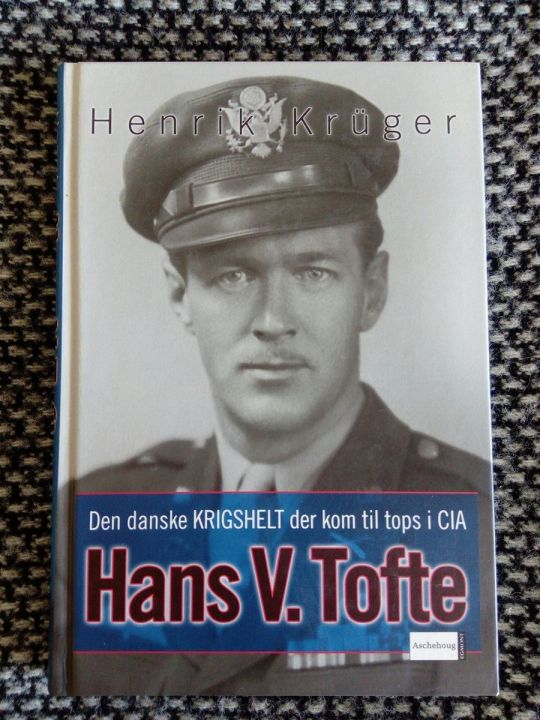
“Clark met with Hans Tofte, in charge of special operations for CIA, and asked for what help he could give in securing qualified agents. Clark also sought assistance from counterintelligence (CIC), and was able to obtain the services of an energetic bilingual Korean Navy lieutenant, Youn Joung, as well as a middle-aged ROK Colonel Ke In-Ju, Rhee’s former head of counterintelligence officer, who had been fired when he failed to predict the North Korean attack. Fearing for his life, Ke had turned himself in to the U.S. Army for protection.”
(via In Mortal Combat: Korea 1950-1953 | John Toland)

Inchon 1950: Operation "Trudy Jackson"
The Secrets Of Inchon, (2002)
Commander Eugene Franklin Clark, USN
Two of Clark's men were Korean officers: a bilingual Navy Lieutenant, Youn Joung; and a former Korean counterintelligence officer, Colonel Ke In-Ju (기인주.) Both had served on General MacArthur's staff. Youn and Ke used the aliases...to try and mask the intelligence nature of the covert mission. Youn is standing at center with the pistol at his belt [Ke In-Ju next to him]...Clark brought Youn and Ke out to the McKinley with him, but most of the men in the above photo were probably caught and killed by the North Koreans, who also murdered 50 civilians at Yonghung-do who had helped the mission succeed.
Clark later took about 150 South Korean Guerillas, including Youn, on island-hopping forays all the way up to the Yalu. In October, Clark was able to notify Tokyo Headquarters that his agents had reported large numbers of Chinese were crossing the Yalu into North Korea.High Command evidently discounted this information. The belief that China would not intervene permeated Eighth Army leadership right down to the Battalion level and lower.”
(via Inchon 1950: Operation "Trudy Jackson" | Korean War Online)
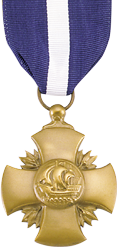
“Aug. 25 - 1950 - The first major OPC operation, code named Trudy Jackson, is conducted by a US team led by 39-year old Lt. Eugene Clark of the US Navy. Clark was a Japanese linguist attached to MacArthur's G2. He is volunteered to lead an OPC team made of Lt. Youn Joung (ROK Navy), Col. Ke In Ju, (ROKA), a US Army captain, and 10 Korean agents trained by Tofte. Col. Ke was formally an intelligence officer who was fired by Rhee for his failure to predict the invasion.
August 28, 1950 - Hans Tofte flies Clark and the two Korean officers to an OPC camp at Sasebo. There they receive a quick lesson on covert operations and get teamed up a CIA radio team. Tofte gives Clark enough weapons, rice, dried fish, sugar, whiskey and gold bars to form a guerrilla army.”
“On Augst 31, 1950, the team boarded the British warship HMS Charity and left for Inchon. They were transferred to the S Korean warship PC-703 at the entrance of Flying Fish Channel. On Sept. 1, 1950, Lt. Clark and his team landed at Yonghong-do in preparation for the Inchon (14 miles from Yonghong) landing. Clark pressed some 50 islanders into scouting missions in Inchon. Informants called in the N Korean troops; the commandos escape to a nearby island of Palmi-do leaving behind the islanders. Those who helped the Americans were shot by the communists.”
(via Eyewitness: A North Korean Remembers | Young S Kim)

Colonel Ke In-Ju (기인주) was fired and imprisoned by Syngman Rhee for failing to warn of the pending North Korean invasion. Col. Ke In-Ju was replaced by USAF Capt. Donald Nichols as head of the future KCIA (the comparison to Lt. Kurtz from Francis Ford Coppola’s film Apocalypse Now is too kind, more accurately Nichols is Reinhard Heydrich [ SS-Obergruppenführer und General der Polizei SS/GESTAPO] reincarnated), for correctly predicting the North Korean invasion.
Ke In-ju recounts that he was rescued on the eve of the mass execution, by a U.S. Army captain who drew his pistol to coax the ROKA jailers to release custody. He was under orders from General MacArthur to bring back to Army Head Quarters in Tokyo, Col. Ke In-Ju, his former G-2 counterintelligence chief of staff, from the Taejon Prison where thousands of political adversaries to President Syngman Rhee were being held. Fortunately, Col. Ke In-Ju was rescued and spared execution, unfortunately a fellow family member, our Grandfather Kee (my father became fatherless at 11 y.o., as the son of the [mayor] of Kwangju, our family impoverished, the community stepped up and took care of our family with my father granted scholarships all the way through medical school), disappeared among the thousands killed by Syngman Rhee’s death squad at the Taejon Prison. After being rescued Colonel Ke In-Ju met with Gen. MacArthur in Japan and suggested the name “Operation Bluehearts” for the code name for the invasion of Inchon.
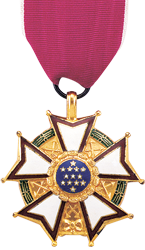
USN Lt. Eugene Clark operated a guerilla force of Korean partisans on the Yalu River, in which he is credited with providing a report to the CIC warning of a pending Chinese invasion, which was unfortunately discounted at the time. Clark like Hans Toft and other early CIA, accumulated large stashes of gold bars through the Korean War. Nichols operated a top secret North Korean currency counterfeiting operation, which was shut down by Syngman Rhee, who feared Kim Il Sung would retaliate by reciprocating and deflate the South Korean currency with counterfeit money, however there was no accounting of the secret warehouse full of cash. Hans Toft and other CIA leaders, built secret personal private islands with their newfound fortunes.
Clark and his special forces (future Navy SEAL) crossed into China to hold a village so that USAF Capt. Donald Nichols’, whose specially designed CIA “fishing boat”, was able to retrieve a downed MIG-15 (secretly flown by Russian aces) with the US Navy and Air Force providing cover support and Clark’s partisans holding back enemy ground forces. There is speculation that a cache of “Yamashira’s gold” was purportedly located by CIA agents, who clandestinely removed the “WWII war loot” before withdrawing under the guise of capturing a downed MIG-15 jet, which risks being misinterpreted by the Chinese as the start of an invasion by UN Forces, triggering a Chinese invasion in response.

Operation Chromite (film)
“Operation Chromite is a 2016 South Korean war drama film directed by John H. Lee and based on the real-life events of the Battle of Inchon, although it presents a fictionalized version of the historical CIA/US military intelligence operation "Trudy Jackson", conducted before the actual landing operation. It was released on 27 July 2016 in South Korea.”
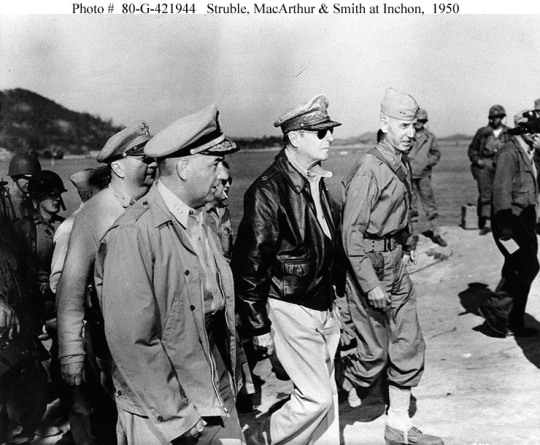
#operationbluehearts#operationchromite#operationtrudyjackson#CIAfirstwar#battleofinchon#eugeneclark#futurenavySEAL#donaldnichols#KCIAfather#syngmanrhee#1stkoreanpresident#keinju#기인주#chiefofcounterintelligence#koreanwarfilmtrilogy#bluehearts
0 notes